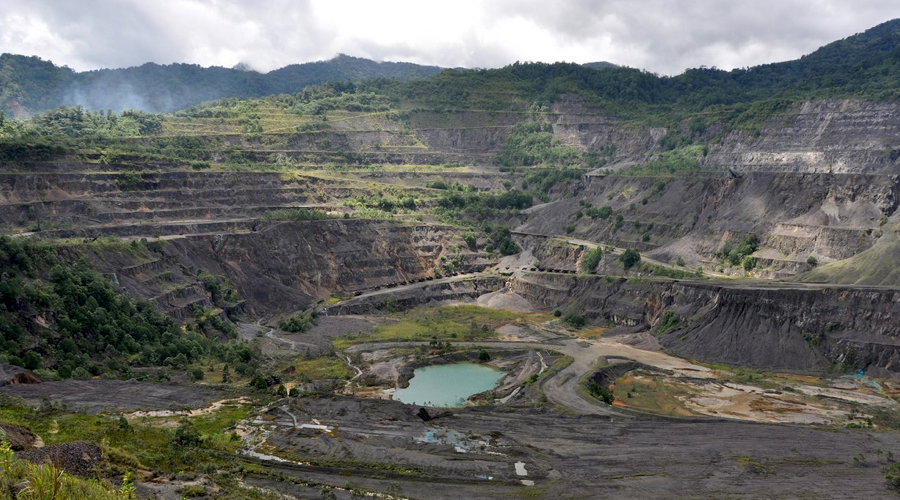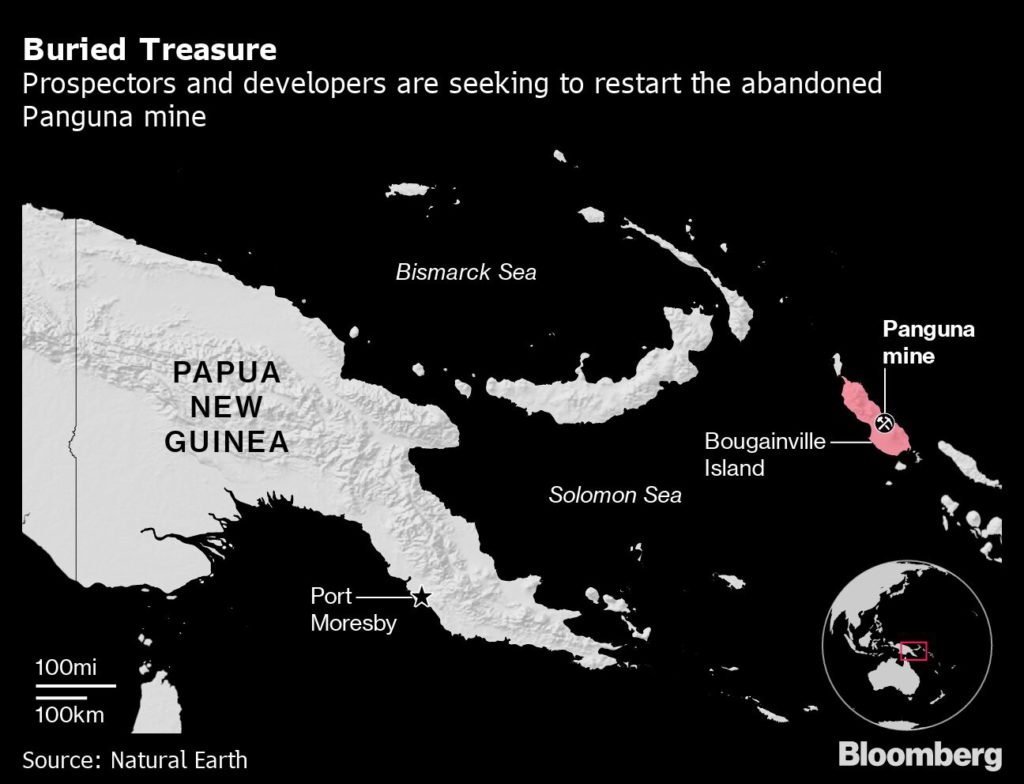
The leader of the South Pacific island of Bougainville aims to reopen the giant Panguna mine, which holds billions of dollars worth of copper, gold and silver. And he’s visiting the US to rally support.
Panguna, formerly operated by Rio Tinto Group, shut in 1989 after local protests over mine revenue degenerated into a civil war that killed as many as 20,000 people. Now Ishmael Toroama, who was elected president of the autonomous region in 2020, wants to tap those revenues to fund Bougainville’s independence from Papua New Guinea.
“One of the reasons I’m here in the US is looking for credible investors to be partners with a local entity in Bougainville,” Toroama said by phone during a visit to Washington, where he is scheduled to meet with leaders of the executive and legislative branches of the US government.
In 2020, the former Rio unit Bougainville Copper Ltd. that once operated the mine, estimated that it would take seven to eight years and $5 billion to $6 billion to rebuild and resume full operations. While a slowdown in global industrial activity has depressed copper this year, traders, financiers and miners are convinced that any weakness will only be short-lived given the metal’s vital role in the energy transition.

Toroama’s trip was sponsored by Numa Numa Resources, an infrastructure developer led by American John Kuhns, who was also present during the interview.
The success of the project will partly depend on earning the trust of thousands of poor landholders, many of whom remember the civil war that was triggered when communities demanding greater compensation from the mine. Bougainville Copper, which ran Paguna for 17 years, is blamed by many locals for contamination attributed to the mine. The deposit also holds reserves of gold and silver.
Bougainvilleans voted overwhelmingly for independence in a 2019 referendum that was part of a United Nations-brokered peace agreement in 2001 that helped end the war. However, independence must still be ratified by the government of Papua New Guinea, and could take years.
(By Aaron Clark)
Comments